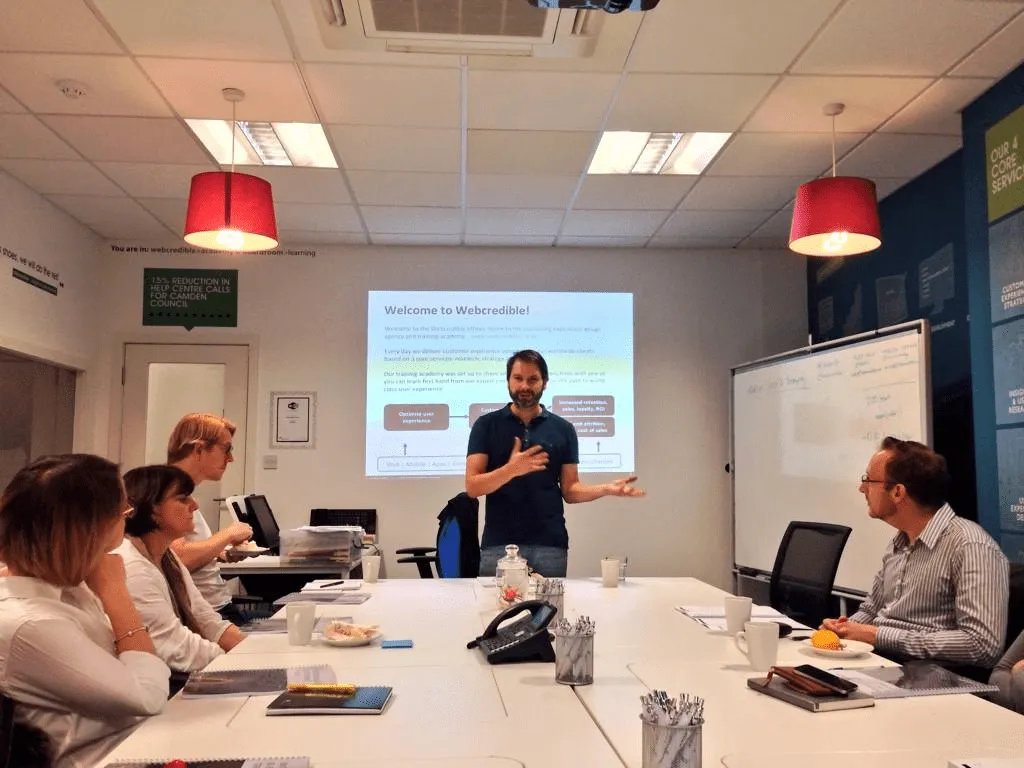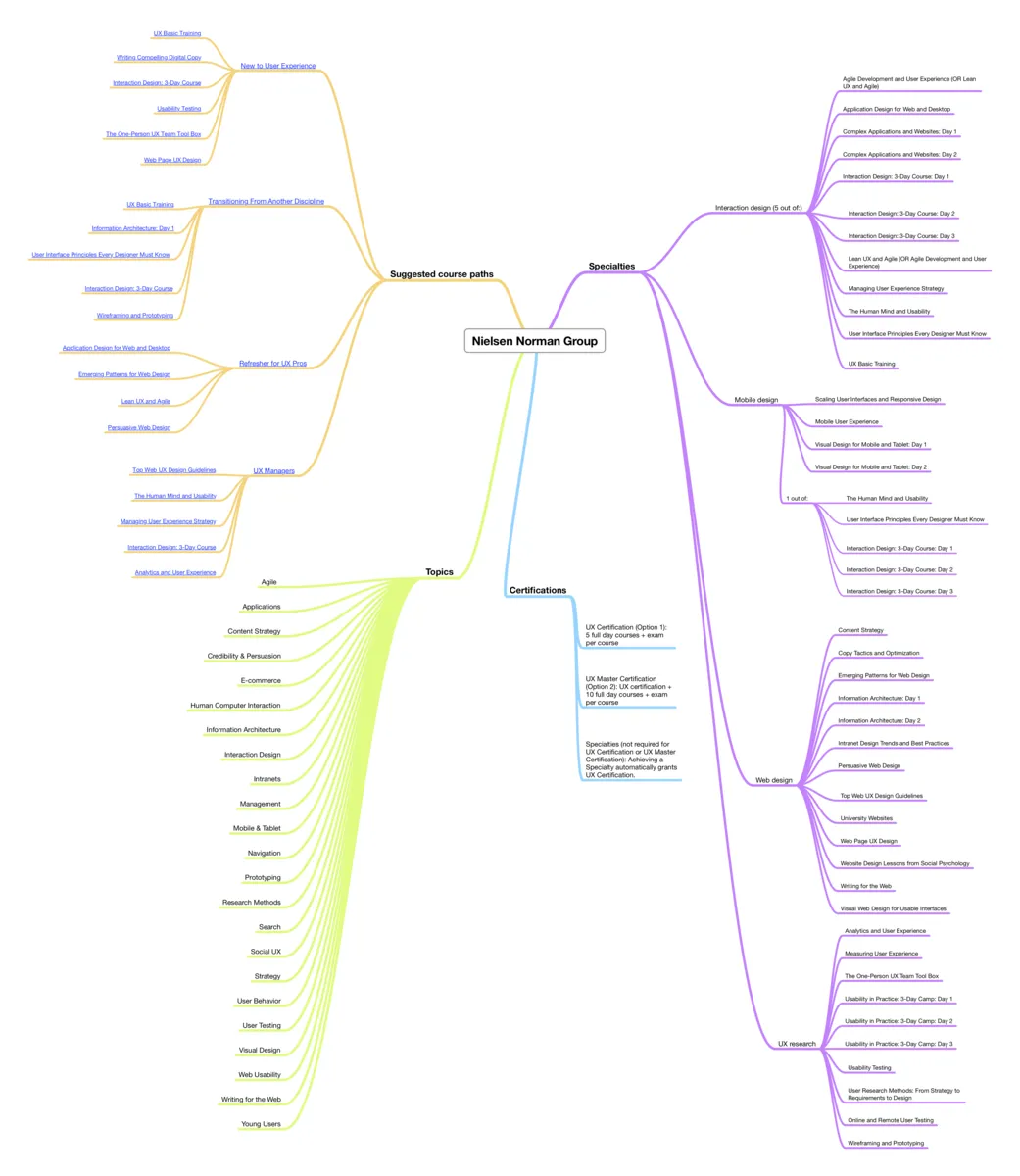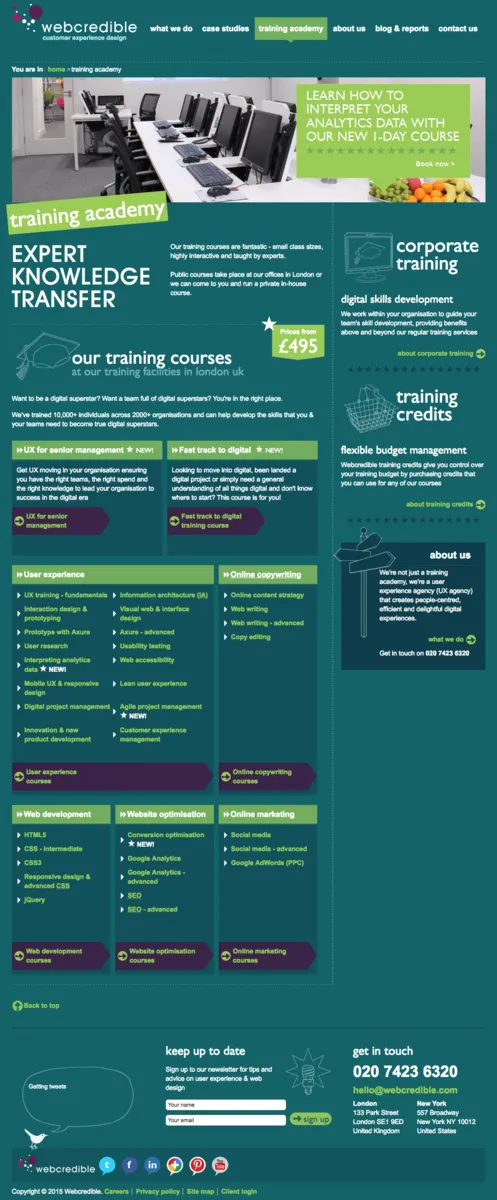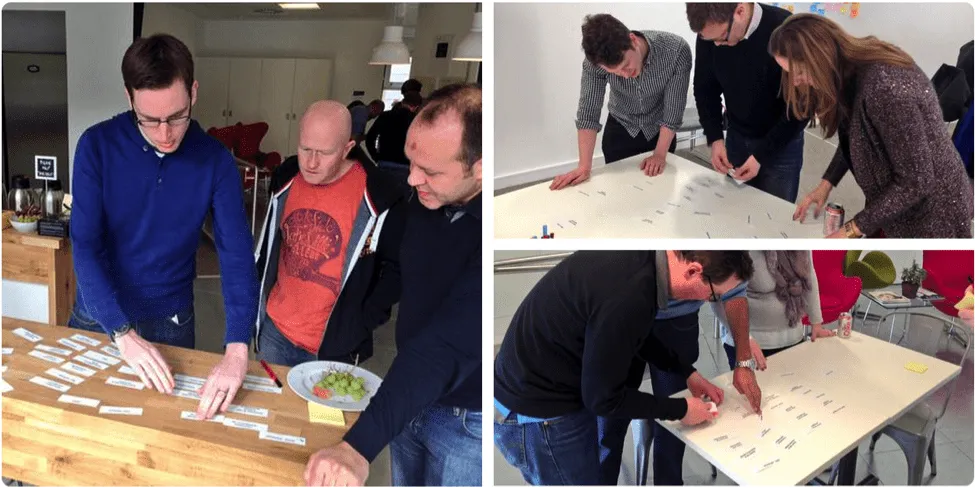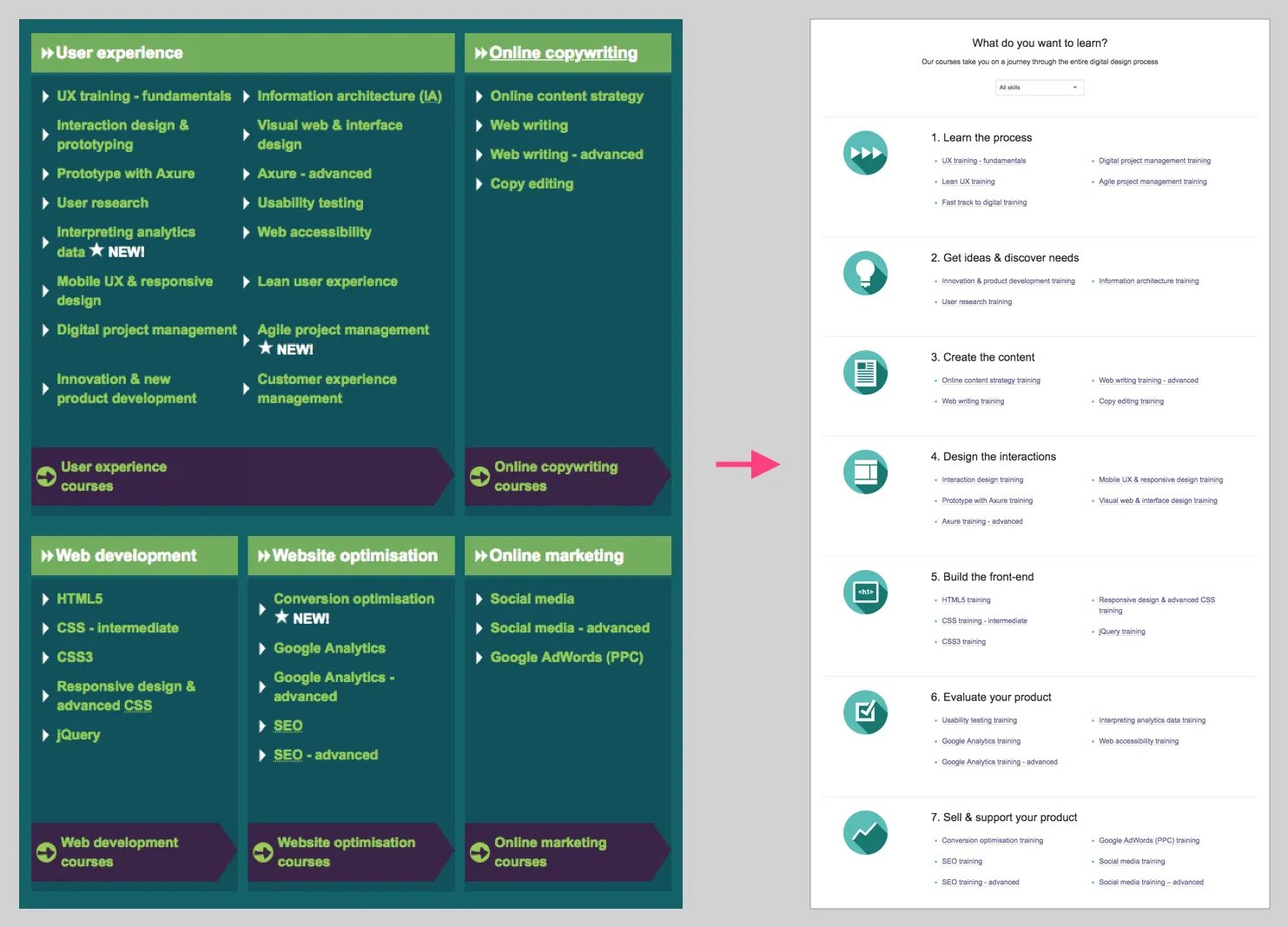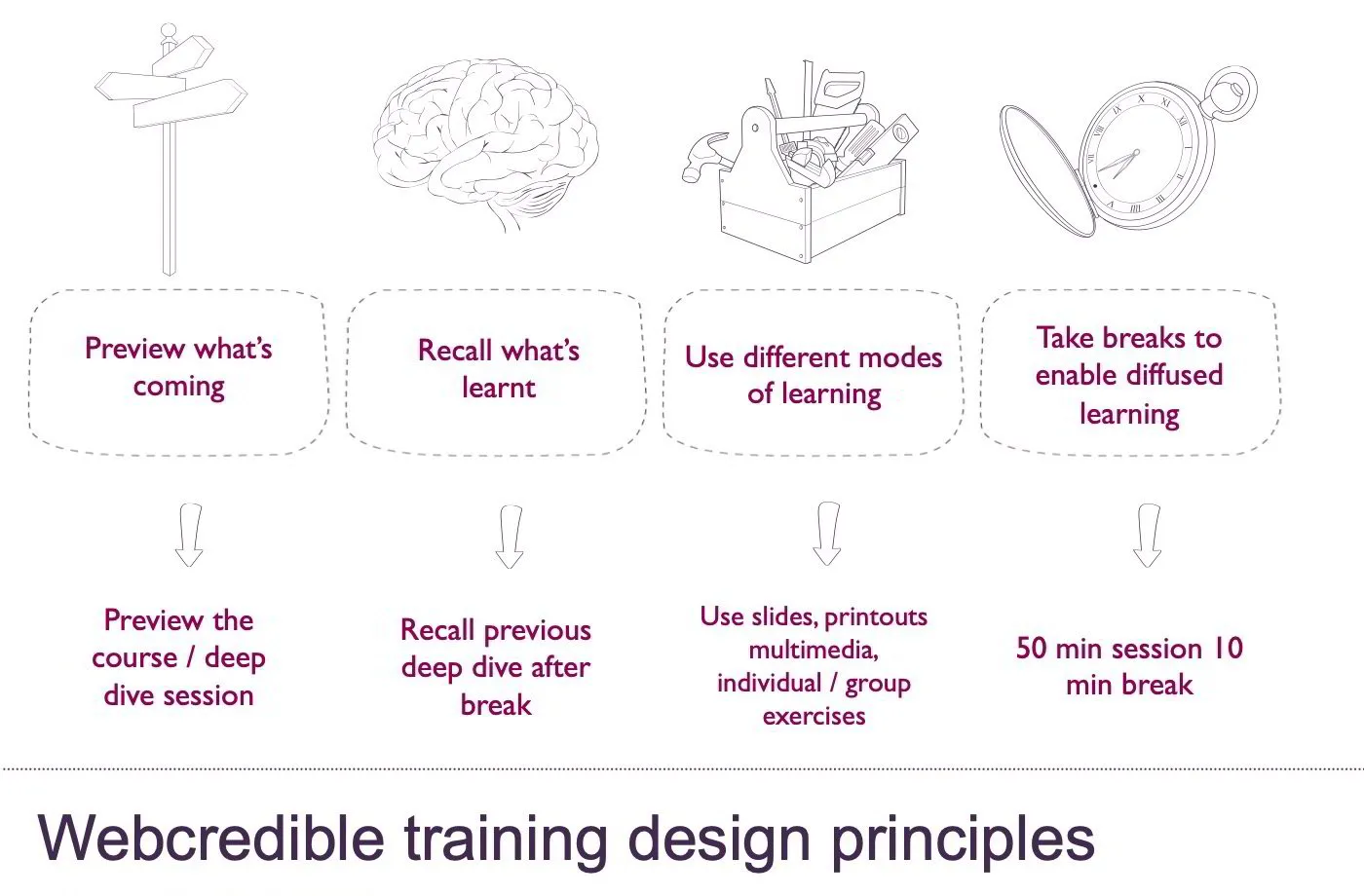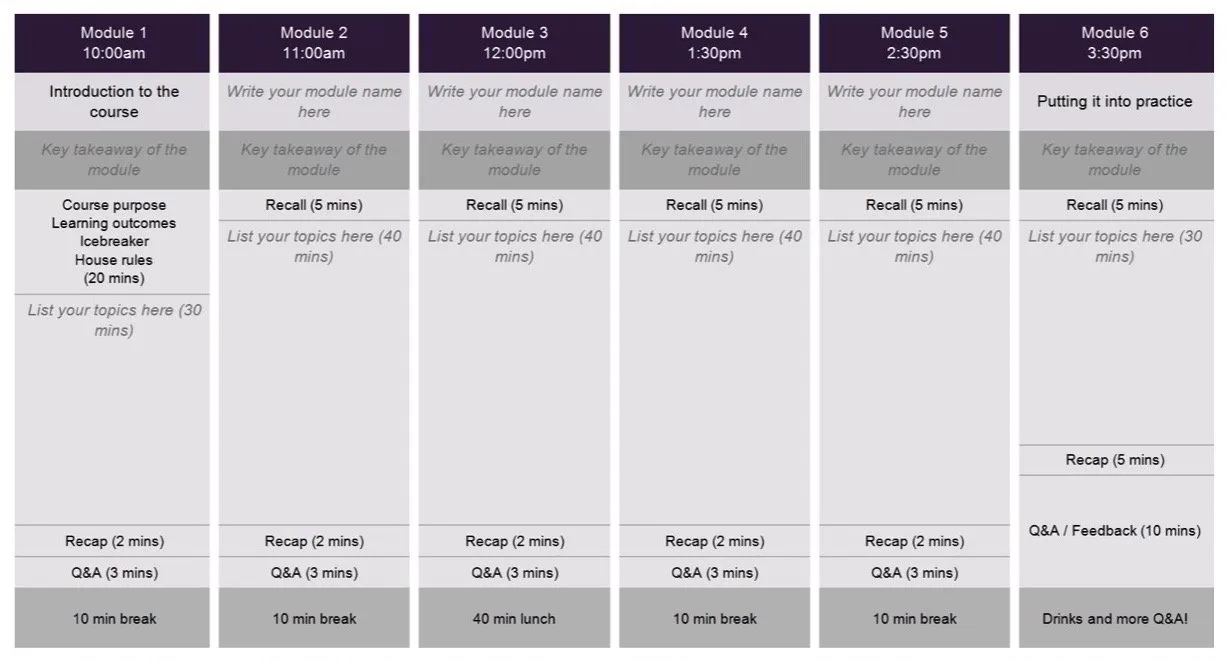Designing the UX training academy
Can you use design thinking to design and improve a teaching experience? Of course you can! As a UX Coach at Webcredible, that's exactly what I did - made it easier for people to pick the right course for their needs, created Webcredible's first Train the Trainer guidelines and modernised the courses, moving from clunky paper manuals to digital deliveries, including video-based training.
Context
Webcredible is one of UK's premium UX design agencies which runs a Training Academy offering courses in UX, UI, analytics and copywriting to industry professionals. I joined Webcredible as Lead User Experience Consultant after moving to London from Sydney in 2014. A few months into my role, I was offered the opportunity to be Webcredible’s first UX Coach to lead the UX training academy and provide UX coaching, intervention and upskilling services to clients.
My role
I was the UX Coach heading the UX stream of the Training Academy. I was responsible for improving the trainee and trainer experience and building a Trainer the Trainer Program. My goals were to improving our educational content, delivery and the end-to-end customer journeys.
Process
Identify issues
My first step was to clarify the new role with senior leadership to ensure there was clarity on the expectations. My next step was to evaluate the existing issues with the courses and the overall experience of attendees. I attended all the UX training courses as a participant to get a first hand feel of how it’s like to be an attendee. I also sat down with the training academy manager to review participant feedback and identify any common issues. I discovered the following issues with the training academy experience:
- Difficulty updating and publishing paper manuals
- Restrictions in sharing digital versions of the manual with participants
- Lack of consistency in format and delivery across courses
- Training manuals were a dumping ground of content
- No standardised learning theories / principles
- No opportunity for participants to socialise or network
Quick wins
After some initial chats with the trainers, I realised that a lot of the issues stemmed out of the lack of ownership of individual courses. There was no one person responsible for improving and maintaining the quality of the courses. Hence, one of the quick wins I implemented was to assign owners to each course - a UX consultant / trainer. The course owner would be the caretaker of the course and responsible for working with trainers to capture, prioritise and implement changes to a course. I also put together a workflow on a Trello Kanban board which showed the continuous improvement steps that trainers and course owners would go through.
Competitor analysis
To understand the UX and design training landscape, I briefly reviewed the offerings of other training providers both in the UK and international.
Mapping the course offerings and information architecture of Nielsen Norman Group
One of my key design principles is inclusion and collaboration. I wanted to ensure that the trainers and other stakeholders including Marketing, Project Management and Sales were part of the design process to improve the training academy. Hence I ran a series of three workshops with them:
- Goals workshop to understand business goals, trainer goals and trainee goals
- Challenges workshop to understand the challenges/needs of the business, trainers and trainees
- Visioning and ideation workshop to generate ideas for the training academy
Pizza always helps lure people into your workshops!
Make it easier to find the right course
One of the ideas that came out of the visioning and ideation workshop was to help participants ‘climb the UX mountain’. In other words, a design a clearer UX education pathway for them to follow. The old course list on the Webcredible was not designed to cater for those pathways.
Furthermore, we also wanted to make it easier for customers to find the right course for their needs. I conducted a guerrilla card sorting study with actual training participants during their breaks. I labelled the cards with the names of the courses we offered and asked the participants to group them into clusters that made sense to them. The purpose of this was to understand the mental models of course participants in how the courses fitted with each other.
Key learnings:
- People want to know the progression of courses (e.g. which ones are easier and which ones are harder, which courses have pre-requisites etc).
- People need to know how the course fits into what they need to do in their role.
The old list of courses on the Webcredible website was just a single list that didn’t cater to either of those needs. Based on the study, I redesigned the structure of the courses from one long list to a modularised format which showed the progression of courses in relation to a typical product development process.
I also invited internal stakeholders (sales team, trainers, senior leaders) for internal review of the proposed changes and further iterated the designs.
Improve training quality
Another issue I noticed after conversations with trainers was the lack of proper training for trainers. The pathway for UX Consultants to start training involved a 3 step process:
1. attend the course taught by a more experience trainer
2. co-teach the course with another trainer
3. teach the entire course by themselves.
Although these steps were valuable in helping trainers learn from other trainers, they didn’t teach the consultants the fundamental principles of how people learn and how to be more effective trainers. So they could be picking up bad habits from another experienced trainer, who also might not have been aware of their bad habits. I attended a BTEC certified Train the Trainer course to upskill on the principles of teaching and learning. Based on that, I created Webcredible’s first set of training guidelines for UX consultants to be better trainers. The guidelines included:
- fundamentals of effective training strategies
- how to design courses based on how humans learn
Based on customer feedback and principles of effective learning, I drafted the first set of training design principles.
I revamped the course structure based on the design principles. The main changes I made were:
- Shorter 1 hour sessions (50 min + 10 min break) to make the learning experience more comfortable for all participants (some participants needed comfort breaks more often). The 10 min break also assisted with diffused learning that happens when the brain is not focused on a particular task and is allowed to roam.
- Recap at the end of each session (most courses were pretty heavy in content and participants would soon forget what they learned. Having a recap at the end of each session reinforced their learning from that session)
- A recall at the beginning of each session to aid memory
- Drinks at the end of the day. These were beneficial in two ways: it gave participants a chance to ask questions and network with the instructor and other participants at the end of the day in a non-classroom environment. Secondly, it also gave Webcredible consultants and sales team an opportunity to connect with potential clients.
The redesigned course structure template
Moving away from printed manual to slide decks
For a long period of time, Webcredible taught all its courses off printed manuals which students would receive at the beginning of the course. Whilst these manuals were useful as a keepsake for participants after the course, they involved a lot of logistical time and costs in maintaining and printing them. Also, based on participant feedback, the manuals would be just collecting dust somewhere on their desks. Participants would ask for a digital version of the manual which we were not able to provide for the fear of unauthorised distribution of our course contents. Based on conversations with trainers, I also found that the barriers involved in updating manuals kept them from making too many changes to the manual even if the changes were necessary. Hence, I made the decision to move away from printed manuals into digital slide decks.
One-pager takeaway to further reinforce key learnings and promote the Webcredible brand
One of my main goals during my role was to simplify the learning process for participants. Most of them already had busy lives and a lot of knowledge gained during the course would be forgotten in the midst of the daily grind back in the office. One of the new course materials we tried was a one-pager for each course which would summarise the key takeaways. The ultimate goal was to be able to give participants printed flash cards that they could take back to their office and share with their colleagues. This would also serve as promotional material for Webcredible.
One-pager printed takeaway given to participants at the end of the day during the course
Unresolved challenges and learnings
I left Webcredible in July 2015 and unfortunately was not able to implement all the changes or resolve all the issues. On reflection, here are some major issues I would’ve liked to tackle.
Clarity of business strategy and direction
Having a clearer strategy and direction on the training academy would have helped formulate a more concrete roadmap and funding for some of the improvements. In hindsight, I could’ve taken the initiative to drive some of this strategy and roadmap with the leadership team.
Client projects taking priority over training development
Being a consultancy, client projects would always take precedence over training development. However, if I were to do this again, I would clarify expectations and set priorities for the development of the training academy with business owners and stakeholders early on.
Difficult to get people excited about training
The word training itself sounds boring. Whilst a lot of designers and consultants at Webredible loved teaching the courses, it was difficult to get some of them excited about the thought of standing in front of a group of people for 8 hours talking about design. I would continue having further conversations with the trainers to uncover the underlying drivers and motivations to teach and try ways to incorporate these drivers more strongly into the teaching process.
